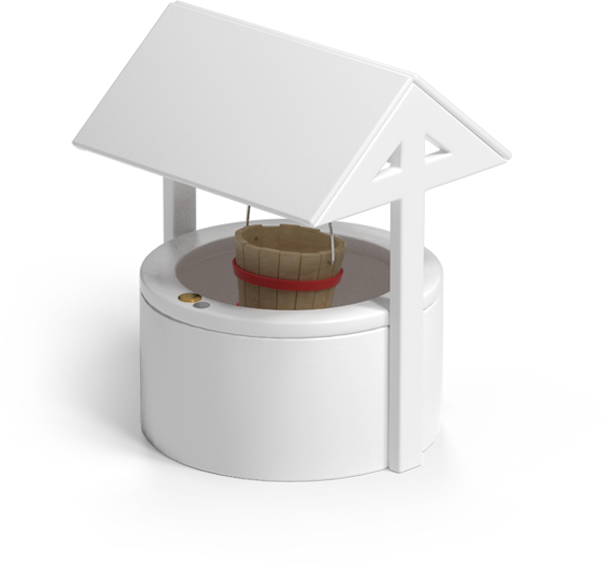Pension Investment Alternatives: Where else you can invest for retirement
Pensions are vital when it comes to retirement but increasingly people are becoming disillusioned with the pension industry and are looking into the alternatives. We have compiled a list of various vehicles that can be used for retirement and given you the lowdown on what each may be able to do for you.
By Jon Howe6/12/20

Saving a nest egg for your retirement is both essential and entirely down to you. The state pension is worth a maximum of £164.35 per week in the 2018/19 tax year1, which is unlikely to cover everything you need in retirement, so you need to start thinking about how you are going to fund your lifestyle now.
While it is never too late to start a private pension scheme or opt into one with the new job you have just landed, many people are beginning to see less benefit to pensions, due to the strong possibility of them not rising in value in line with our earnings and the fact that the more attractive final salary pensions are becoming rarer. Also, people are wanting more control over how their money is invested, rather than leaving it to a pension company they may not necessarily trust.
The alternative savings options you have depend on your attitude to risk, how much work you want to put into building your retirement fund and how creative you are in finding money-making solutions.
Traditional pension fund investment alternatives
A well-established alternative to a pension scheme is an ISA. This is a flexible, tax-free savings scheme where your money is always accessible. There are different tiers of interest rates depending on which product you choose and you can also create an account that is invested in stocks and shares. But the common factor that puts people off using an ISA as a main retirement fund is the annual limit to how much you can invest in it.
Property
Investing in property is also very popular if you are able to plan ahead. You may be able to pay off your mortgage before you retire and then sell the property, downsize to a smaller home and enjoy the profits. Alternatively you could rent the property out and use the monthly income as a healthy supplement to your state pension. The property market, however, can be volatile and involves other costs that you may find prohibitive, particularly if you are a landlord, such as capital gains tax, which you could be subject to if you have a second home.
Stocks & Shares
If you are open to high risk investments then investing in stocks and shares is an option, but be aware that there are no guarantees that dividends will be paid out and you need to invest a decent sum of money before you will see a worthwhile return. It is certainly worth seeking some professional advice on this as it can be a potentially expensive option but you do get a much more personal experience. There are plenty of low-risk investments if you have a strict limit to how much you want to invest and/or can afford to lose.
Not surprisingly, many people want a secure method of building a nice retirement pot and whilst these schemes have various pros and cons, there are a number of other investment options that have developed over recent years that might require more investment acumen, but as an alternative to pension speculation, offer a return on investment that largely varies according to your attitude to risk.
SIPPs
This stands for self-invested personal pensions and does what it says on the tin as a good alternative if you want to play an autonomous role in where your pension savings are being invested. As a sort of DIY pension, a SIPP can be managed online via a portal that allows you to see how much money you have invested, how it is growing (or otherwise) and if it isn’t growing you can look into why. SIPPs can be invested in a range of different schemes, such as stocks and shares, investment trusts listed on the stock exchange, bonds, commercial property, real estate investment trusts and offshore funds.
Initial investment can be quite low but, naturally, the more schemes you buy into the higher your overall investment. As at 2018/19 you can top up your SIPP with lump sums, but only to a maximum of £40,0002.
A SIPP is suitable if you are comfortable making your own investment decisions and have some experience and understanding of the field, but you should always seek the advice of a financial advisor also. A SIPP will also suit somebody with a larger pension pot with which to invest, and if you want to keep your money invested after you retire, then you can still draw an income. There are fees involved in setting up a SIPP, plus annual fees, but you do qualify for 45% tax relief3.
There are generally two types of SIPP, a full SIPP which offers the widest choice of investment vehicles but has high charges, or a low-cost SIPP which involves less investment choices and is suitable for those with a smaller investment pot. Also, there are less charges as this SIPP is ‘execution only’, meaning you make the decisions yourself and are therefore not paying for advice from the investment firm. This doesn’t prevent you taking independent financial advice of course.
Tracker Funds
These are a relatively simple way to get started with investment funds, if you are wanting to boost your pension pot. Tracker funds are a low-cost collective of investment schemes which follow the movement of an index, hence when an index rises, so does the value of your fund. On the flipside, the reverse is also true. So if the value of the index falls, your investment falls too. As you or your fund manager are not actively making investment decisions, these are known as ‘passive investments’.
An index is a collection of a number of stocks and shares and will go up or down depending on the overall performance of those stocks and shares. Each stock market has at least one index, for example the FTSE 100 is an index that represents the biggest 100 companies in the UK. Tracker funds tend to be cheaper because there are less management costs compared to actively managed funds. However, a major downside is that an index can be dominated by organisations in a particular industry, and so if that sector is performing badly it can affect your investment quite negatively. Such as during the banking crisis of 2008 when banks dominated the FTSE 100.
Some tracker funds will buy shares in every company in an index, making it easier to follow their performance. This is called full replication. Other funds will only invest in a sample of an index, which is partial replication. You can judge the success of a tracker fund by analysing what is called ‘tracking error’. This shows how the fund’s performance has deviated from the performance of the actual index. As there are fees involved in running the fund, there will never be an identical replication, but a tracking error that is just the cost of the fund can be considered good.
Other Passive Investments
Passive investments aim to maximise returns over the long term by reducing the amount of ‘buying and selling’ required. This way you avoid paying fees which can influence the performance of an investment, and obviously, the more frequent trading you undertake the more fees you will pay. Passive investors are not ‘active traders’ and hence are not attempting to act quickly to profit from short term fluctuations in the market. The basic strategy of a passive investor is that, given enough time, the market will generally post positive returns.
Tracker funds are one form of passive investment while property is another, and clearly a very popular one. Rental property is an increasingly common form of passive investment, where property is purchased, a management company runs the house and you see the profits. Property crowdfunding is a more recent take on this, which allows you to take advantage of a percentage of direct ownership of a property, without the responsibilities attached to actually managing the property.
Other forms of passive investment include peer-to-peer lending, where investors can earn a return through interest on a loan. This can be a high risk form of investment as the best returns are seen from investors who are classed as a high credit risk. Dividend stocks are a relatively easy way for investors to make money as a company effectively pays you to own shares. As a company brings in earnings a percentage of them are ring-fenced to pay back investors in the form of a dividend. You can then re-invest this in additional shares or take a lump sum cash payment. You can analyse the history of how a company has paid out dividends before you choose to invest, as some dividend yields vary considerably from one company to the next and from year-to-year.
Robo-Advisors
This is a digital platform run by individual organisations, which provides a financial planning service that has no human supervision or interface, and is entirely driven by automation and algorithms. A robo-advisor will collect financial information from a client via an online survey to build a profile. This will establish your financial goals and will then offer advice on investments based on this data. It can also invest your assets on your behalf.
Robo-advisors are still quite new to the UK but are perhaps the ultimate passive investment and are certainly a good tool for those who are not confident investors, as the automated service does all the work for you. Fees are quite low as there is little human management involved, while the various sites are user-friendly and easy to navigate. You can typically choose between five to ten investment portfolios which are pitched to appeal to investors with varying attitudes to risk.
The algorithms use the data collected, ie. how much investment risk you can accommodate and what timeframe you wish to invest over, to find a suitable investment package. The short online survey also establishes whether you are cautious or adventurous in terms of your attitude to risk and finds the most suitable blend of investments that matches your profile.
Like any investment, there will be good years and bad, but in 2017 in the UK the most ‘mild’ robo-portfolios returned a yield of 1-4%, medium portfolios between 5-8% and the most adventurous returned between 9-14%4. With a number of big players in the UK robo-advisor market now, such as Moneyfarm, Nutmeg, Scalable, IG and Wealthify, this is an emerging market that will tick many boxes for those looking to make decent money in a situation they can influence and put constraints to.
Conclusions
There is no one correct solution to retirement investments that can be classed as right, as everyone has different thresholds of risk, different levels of investment and different tolerance to how much volatility they can handle. But for everyone it is possible to find a balance where separate pots of money in separate schemes can help to smooth out the peaks and troughs of volatile markets, and ensure that you are not risking large amounts of money in the wrong type of scheme or in just one type of scheme. Finding this balance is unique to you and requires the help of a professional advisor, but certainly one common piece of advice that always applies is that you should look into and execute these investments as early as possible, to ensure as much as you can, that money you have saved early in life is making money for you on its own, for the rest of your life.
Sources
- www.MoneySupermarket.com "Saving for retirement - It's up to you to build a retirement savings pot"
- www.Which.co.uk "What is a SIPP" by Paul Davies
- www.Which.co.uk "What is a SIPP" by Paul Davies
Take a look at our other articles




